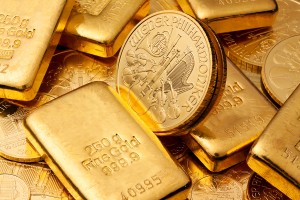Gold started off the year strong after a rough 2013, but entering the second quarter is showing that gold can’t break the $1,400 mark. At the time of this writing, gold is trading at just over $1,300, while its silver counterpart has fallen to under $20. This decline could prove to be a lucrative buying opportunity for many gold bugs and those with strong yellow metal appetites.
According to a recent reported published by the World Gold Council (WGC), gold demand in China is projected to increase 25 percent within three years as the population becomes wealthier. It is estimated that consumer demand will grow to 1,350 metric tons by 2017.
Last year’s price drop caused consumers to acquire more gold, whether it was coins or bars, rocks or jewelry, as China accounted for more than one-quarter (28 percent) of global consumption. Buying of gold transpired significantly – China also took over from India as being the top buyer of the yellow metal – when prices fell by 28 percent, the biggest decrease since 1981.
 “Whilst China faces important challenges as it seeks to sustain economic growth and liberalize its financial system, growth in personal incomes and the public’s pool of savings should support a medium-term increase in the demand for gold, in both jewelry and investment,” said Albert Cheng, Far East managing director at the council, in a statement in the report.
“Whilst China faces important challenges as it seeks to sustain economic growth and liberalize its financial system, growth in personal incomes and the public’s pool of savings should support a medium-term increase in the demand for gold, in both jewelry and investment,” said Albert Cheng, Far East managing director at the council, in a statement in the report.
China remains to be the fifth-largest holder of gold as it maintains more than 1,000 tons. However, bullion only represents more than one percent of its total reserves, compared to Germany’s 70 percent.
“We have witnessed astonishing increases in demand for gold from consumers across the country,” Cheng added. “The cultural affinity for gold runs deep in China and when this is combined with an increasingly affluent population and a supportive government, there is significant room for the market to grow even further.”
Gold to Fall Further
Westpac Banking Corp. projected in a new report Tuesday that gold will decline by approximately 22 percent throughout 2014 and end the year at $1,025 per ounce. The financial institution argued that low inflation and the Federal Reserve tapering its monthly stimulus are two of the reasons why the yellow metal will experience a slump.
There are contrarian investors that still believe the central bank will reverse its taper when they realize the unsound markets rely on quantitative easing.
During the Monday trading session, gold was being sold off as the greenback and retail sales inched higher.
Despite the central bank and financial groups arguing that inflation is low, the data, even government statistics, indicate that price inflation is quite rampant in the domestic and international economies.
The latest report to support this is the Department of Labor’s consumer price index (CPI) that found consumer prices increased last month as food and housing costs rose sharply. U.S. producer prices, meanwhile, recorded the largest increase in nine months. Even J.P. Morgan Chase warned last week of higher global price inflation levels in the near future.



